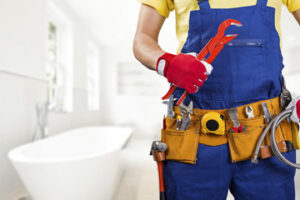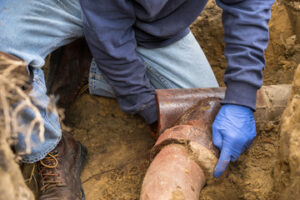Leaks, clogs, and other plumbing issues can cause significant damage to your home and cost you a fortune. The good news is that many of these problems can be prevented with preventative maintenance.
Plumbing Company Shreveport recommends that homeowners regularly inspect their faucets, shower heads, and toilets for signs of leaks. Leaks that are left unattended can escalate into major problems, including water damage and mold.
Inspect Your Drains Annually

Drains, sewer lines, and plumbing fixtures are prone to clogging and other problems if left unattended. These issues can lead to costly repairs, health concerns, and property damage. Fortunately, many of these issues are preventable with routine inspections and maintenance. Taking these steps will help you avoid the most common plumbing disasters and save you money in the long run.
Costly plumbing problems often stem from drains that are blocked or clogged by hair, food particles, grease, and other debris. These clogs can worsen over time and prevent water from flowing out of your home, causing flooding and other dangerous situations. Keeping up with professional drain cleaning every 6-12 months can prevent build-up and keep your drains functioning properly.
Leaky pipes and fixtures can waste gallons of water, leading to high utility bills. In addition, they can also cause odors and structural damage to your home. You can check for leaks by checking the water meter in your home when no one is using water and looking for signs of water damage, like stains or discoloration. If you find a leak, call your plumber right away to fix it before it gets out of hand.
Clogged drains and pipes can be prevented by installing drain covers, using strainers in sinks and bathtubs, avoiding pouring grease down the drain, and implementing a regular drain cleaning routine. If you have hard water, a water softener can also be helpful to prevent mineral build-up.
Drains, pipes, and fixtures will wear out over time due to daily use and the natural aging process. These parts are prone to cracks, rust, and other damage if not regularly inspected, cleaned, and maintained. In addition to preventing clogs and other problems, these measures can also help extend the lifespan of your plumbing system.
The money you may think you’re saving by skipping a routine plumbing inspection could wind up being aimed at expensive repairs, replacements, and your monthly utility bill. The same applies to fixing minor issues, such as leaking faucets or toilets, that could become worse over time. Remember the old saying, “The longer you leave a wound untreated, the more likely it is to infect.”
Hire A Plumber For Routine Inspections
When it comes to plumbing issues, an ounce of prevention is worth a pound of cure. Regular inspections of pipes, fixtures, and water heaters by a licensed plumber can help to identify current or potential problems and provide the necessary repairs before they become costly emergencies.
For example, clogged drains can lead to backflow problems, while hidden leaks can result in water waste and potentially damage interior surfaces. Leak detection devices can detect the presence of water and alert homeowners, allowing them to shut off the water supply before the problem worsens. Installing these devices near sinks, bathtubs, and toilets can also help to conserve water.
Aside from preventing costly emergencies, maintaining your plumbing system can save you money on your monthly utility bills. For instance, a plumbing inspection can help to identify leaks and address them promptly before they result in water damage, which can cause your monthly water bill to rise significantly.
Another benefit of plumbing inspections is preserving the value and marketability of your home. Resolving a minor leak or pipe issue before it causes structural damage can prevent the need to spend thousands of dollars on renovations and repairs.
In addition, routine maintenance can extend the lifespan of your pipes and fixtures. For example, a poorly maintained water heater can suffer from premature deterioration, leading to rust and corrosion that shortens its life expectancy. Conversely, a water heater that is regularly serviced by licensed plumbers can remain in peak condition and function well beyond its expected lifespan.
Plumbing inspections can also help to save on your insurance costs. Since water damage accounts for the majority of homeowner’s insurance claims, it is essential to invest in preventive measures to lower your risk. An annual plumbing inspection is a great place to start.
Plumbing emergencies can strike at any time, so it is essential to plan by taking the above preventive measures. By implementing these simple strategies, you can reduce your risk of a plumbing emergency and save on repair costs. Whether it is checking for leaks, insulating your pipes, or scheduling routine plumbing inspections, these preventative measures can significantly improve the quality and lifespan of your pipes and fixtures.
Keep Trees And Shrubs Away From Your Sewer Line
Roots can cause thousands of dollars worth of damage by infiltrating sewer lines and causing clogs. Luckily, there are preventative measures that can help you avoid this costly problem.
When you plant trees and shrubs in your yard, keep them a safe distance from your home’s sewer line. Ideally, the plants should be planted at least as far away from the sewer lines as they will be at full-grown. For this reason, it is important to consult a plumber before planting if you are unsure of where the pipes are located on your property. They can send a professional out to mark them with paint or a camera for you.
Tree roots are attracted to the water, oxygen, and nutrients in sewer lines. Since a pipe crack or loose joint provides easy access to these resources, it is no wonder that they would grow into the line and cause a break or a clog.
To prevent this, use a root growth inhibitor or install a barrier that will stop the roots from penetrating the sewer line. A metal or wood barrier that is buried six inches to a foot deeper than the pipes can serve as a physical deterrent to the roots. Chemical treatments like copper sulfate and potassium hydroxide can also discourage roots from growing into the sewer lines.
If you see warning signs of a broken sewer line, such as multiple drains backing up at once or foul odors coming from your toilets and showers, don’t wait to call a professional. They can clear the clogs and check for any structural damage to the pipes that might need repair.
Staying away from plants with aggressive root systems and regularly hiring a plumbing expert for inspections can save you a lot of money in the long run. It is much cheaper to take these preventative measures than it is to deal with the costly damages caused by trees and shrubs that infiltrate the sewer lines. It is also much less stressful and time-consuming to make these decisions before the problem arises than dealing with it once it becomes an emergency.
Insulate Your Pipes
A burst pipe during the winter can cause extensive damage to your home and require expensive repairs. One way to avoid this problem is to properly insulate your pipes. This can be especially important for pipes in unheated parts of the home, like crawl spaces and attics.
According to the International Business and Home Safety (IBHS), installing proper pipe insulation can help prevent a pipe from freezing, and even reduce the likelihood of a freeze if it does happen. It can also be very affordable—IBHS estimates that most homes can get the job done for just $10, which is significantly less than you’ll pay for a bottle of aspirin or an insurance deductible.
Pipe insulation does a couple of critical things to protect your plumbing system: it keeps cold water in and hot water out, and it creates a barrier that regulates the temperature. These are vital functions in the winter, and they are what makes pipe insulation a common preventative measure among homes in climates that experience frigid winter temperatures.
The other thing that pipe insulation does is limit condensation on the surface of your pipes. This can corrode the surface of the pipes, and eventually lead to leaks and failure. Fortunately, special vapor barriers and other types of insulation can keep condensation from occurring.
If your pipes are not insulated, it is time to invest. You can start by identifying any exposed pipes in unheated areas of the house and using foam or heat tape to wrap them. The next step is to insulate any unused or uninsulated piping throughout the house, including the sewer line that runs underground from your home to the municipal sewer line on the street.
The most common way to insulate your pipes is with traditional pipe-wrap insulation, which is inexpensive and easy to install. Simply duct tape the end of the insulating strip to the pipe, and begin wrapping it around the pipe in spiral loops. Continue to do this until the pipe is fully insulated. For longer lengths of pipe or sections with many bends, you can use foam insulation sleeves. These are easy to cut to size and come in 6-foot lengths. They will fit over your existing pipe and are a great alternative to heat tape.

